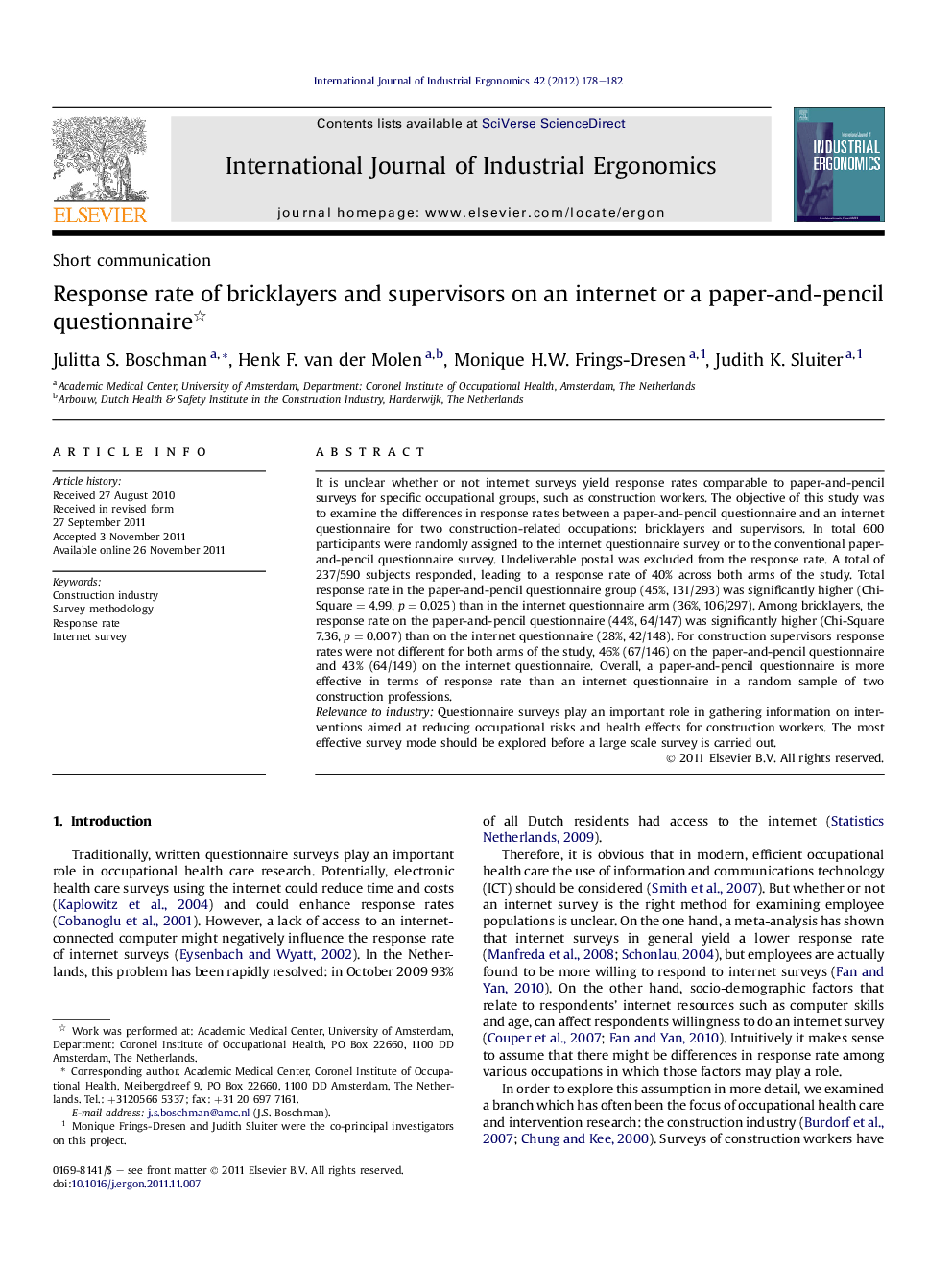| Article ID | Journal | Published Year | Pages | File Type |
|---|---|---|---|---|
| 1096206 | International Journal of Industrial Ergonomics | 2012 | 5 Pages |
It is unclear whether or not internet surveys yield response rates comparable to paper-and-pencil surveys for specific occupational groups, such as construction workers. The objective of this study was to examine the differences in response rates between a paper-and-pencil questionnaire and an internet questionnaire for two construction-related occupations: bricklayers and supervisors. In total 600 participants were randomly assigned to the internet questionnaire survey or to the conventional paper-and-pencil questionnaire survey. Undeliverable postal was excluded from the response rate. A total of 237/590 subjects responded, leading to a response rate of 40% across both arms of the study. Total response rate in the paper-and-pencil questionnaire group (45%, 131/293) was significantly higher (Chi-Square = 4.99, p = 0.025) than in the internet questionnaire arm (36%, 106/297). Among bricklayers, the response rate on the paper-and-pencil questionnaire (44%, 64/147) was significantly higher (Chi-Square 7.36, p = 0.007) than on the internet questionnaire (28%, 42/148). For construction supervisors response rates were not different for both arms of the study, 46% (67/146) on the paper-and-pencil questionnaire and 43% (64/149) on the internet questionnaire. Overall, a paper-and-pencil questionnaire is more effective in terms of response rate than an internet questionnaire in a random sample of two construction professions.Relevance to industryQuestionnaire surveys play an important role in gathering information on interventions aimed at reducing occupational risks and health effects for construction workers. The most effective survey mode should be explored before a large scale survey is carried out.
